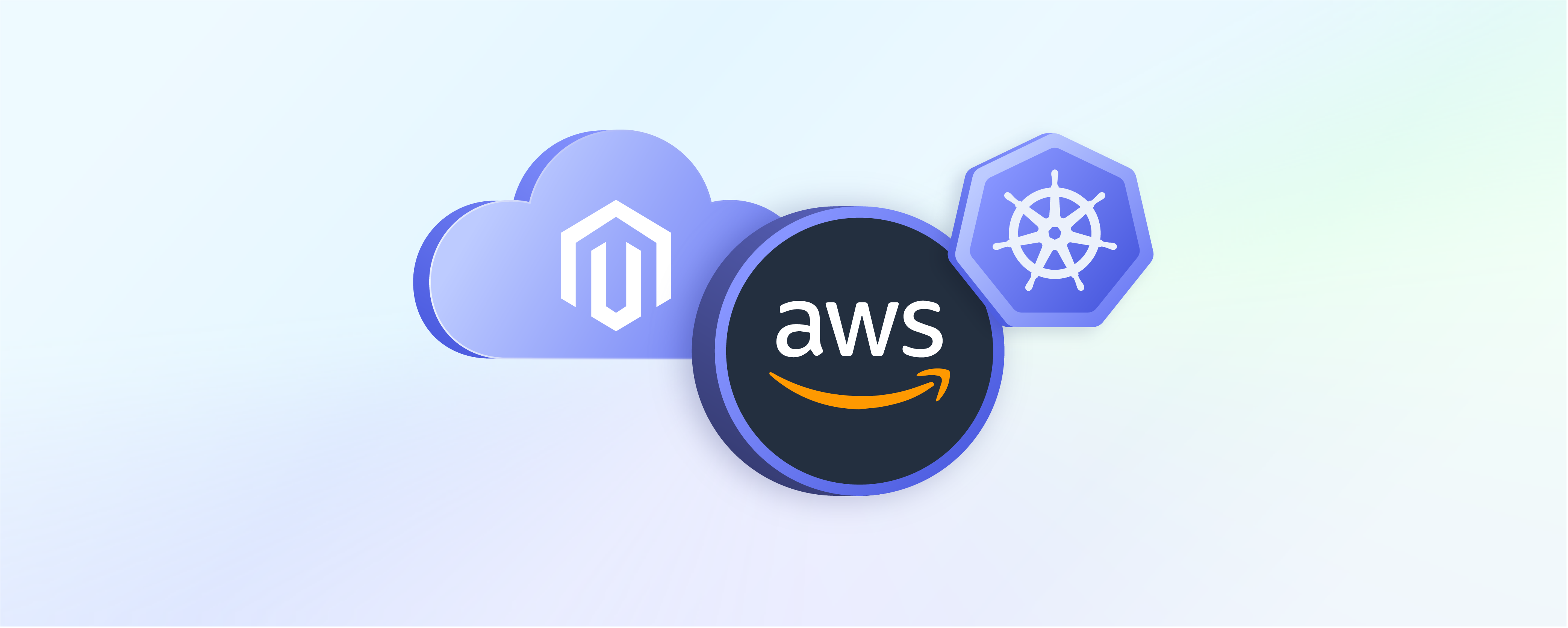
How To Deploy Magento On Kubernetes AWS EKS
Want to harness the power of cloud-native technology to maximize scalability and efficiency? Magento Kubernetes AWS Elastic Kubernetes Service (EKS) can unlock unprecedented levels of scalability. It allows your online store to handle increased traffic and grow smoothly.
This tutorial will cover how to leverage the advanced capabilities of Kubernetes. It aims to simplify deployment and management processes.
Key Takeaways
-
Explore scaling options with Magento Kubernetes AWS.
-
Understand how Kubernetes simplifies Magento's deployment and management processes.
-
Explore advanced techniques for handling increased traffic and ensuring growth.
-
Gain insights into leveraging cloud-native technology to optimize efficiency and performance.
Magento 2 with Kubernetes on AWS Cloud
Deploying Magento 2 on Kubernetes in AWS Cloud offers a powerful, scalable solution.
Amazon's web service solution is ideal for e-commerce businesses. This setup uses the strengths of Magento 2 and Kubernetes. Magento 2 is a premier open-source e-commerce platform. Kubernetes is an advanced container orchestration tool. Together, they create a highly efficient deployment.
-
Advanced Deployment Capabilities: Kubernetes makes deploying and managing Magento 2 easier. It enables precise scaling of web servers and databases to match real-time demands.
-
CI/CD: Kubernetes helps with automated testing and deployment of Magento 2 updates. Updates roll out faster and with fewer disruptions, enhancing system stability.
-
Multi-Tenancy and Isolation: Kubernetes hosts many Magento 2 instances on the same hardware. It is useful for companies managing many client sites or brands. Each instance operates independently and securely.
-
Enhanced Performance Management: Kubernetes enhances performance. It does this by adjusting server instances based on current loads. Amazon's global network also helps. It reduces delays and speeds up load times through regional data centers.
-
Disaster Recovery and High Availability: Kubernetes enhances system availability. It achieves this by spreading resources across many AWS availability zones. It can restart failed containers automatically, reducing downtime. It also supports automated backups and recovery processes, ensuring data stays safe.
-
Cost-Effective: Kubernetes saves money by using resources more efficiently. It scales resources based on actual usage, avoiding unnecessary expenses. Combined with AWS's pricing model, this can lower costs for large-scale deployments.
Benefits of Kubernetes on AWS Cloud
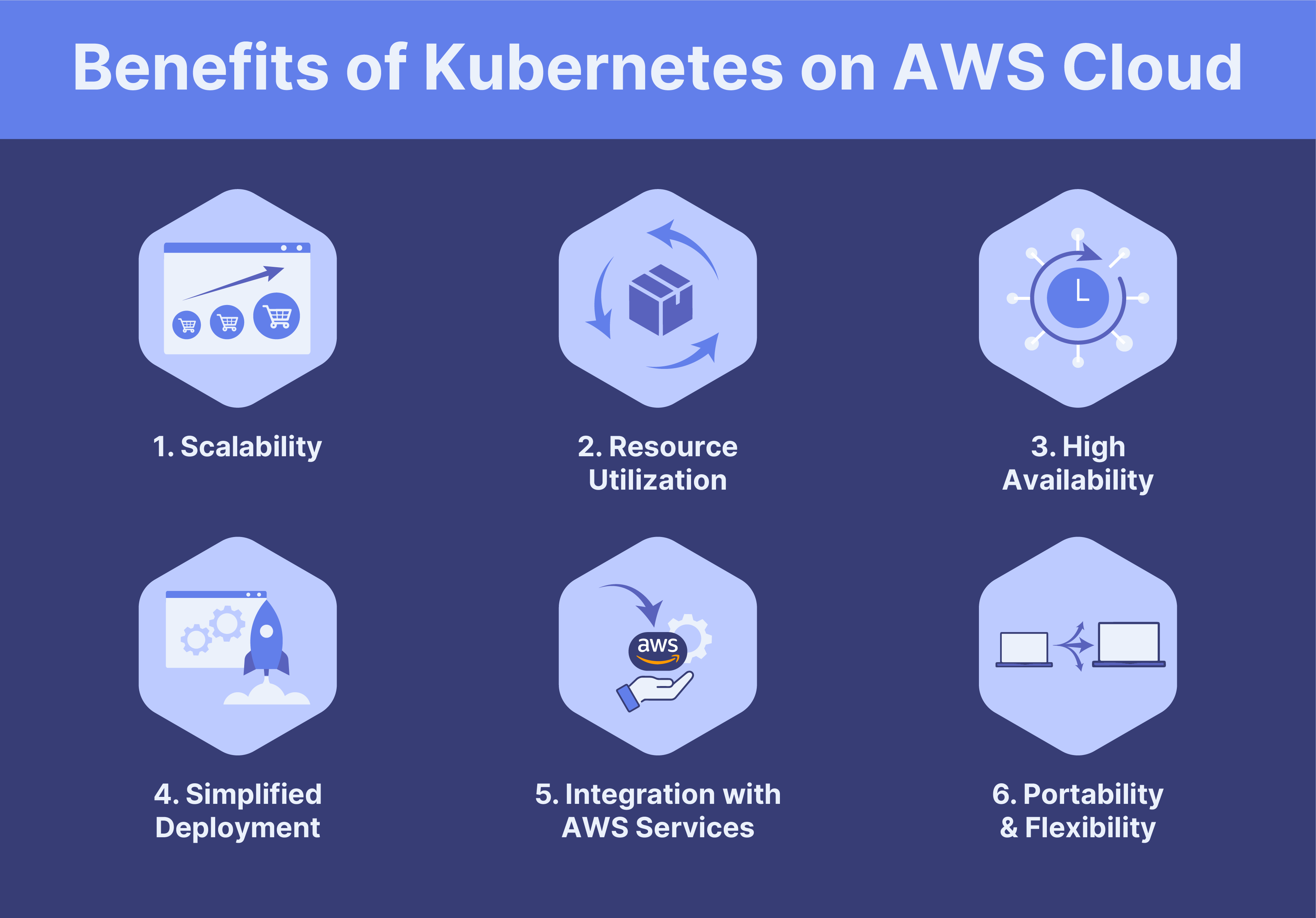
1. Scalability
-
Enhanced Performance: Using AWS EKS, Kubernetes ensures optimal performance. It allows retailers to grow their online businesses smoothly.
-
Cost Efficiency: Elastic resource allocation minimizes wasted resources. It reduces cloud infrastructure costs.
-
Improved User Experience: Using Helm charts for Magento 2 provides consistent performance. It enhances the customer experience.
2. Resource Utilization
-
Cost Optimization: Kubernetes on AWS EKS maximizes resource usage through efficient allocation. It ensures better ROI for retailers.
-
Green Computing: It contributes to environmental sustainability by minimizing resource wastage. It aligns with open-source values.
3. High Availability
-
Business Continuity: Amazon Elastic Kubernetes Service ensures continuous availability. It protects brand reputation and ensures uninterrupted commerce operations.
-
Disaster Recovery: Managed Kubernetes clusters on AWS EKS to facilitate quick recovery. They are designed to handle failures efficiently.
4. Simplified Deployment
-
Faster Time to Market: Using Helm charts simplifies deployment processes. It enables faster market time for Magento 2 applications.
-
Increased Productivity: Retailers can focus more on developing applications. These applications make a difference for their customers. This is due to simplified deployment on AWS EKS.
5. Integration with AWS Services
-
Smooth Integration: Kubernetes on AWS EKS integrates smoothly with AWS services. It extends functionality and scalability without complexity.
-
Extended Functionality: It uses open-source solutions such as Docker and JavaScript. It enhances application functionality effectively, meeting evolving business needs.
6. Portability and Flexibility
-
Vendor Flexibility: Retailers can choose the most suitable cloud environment. They can do this with Kubernetes on AWS EKS. It ensures flexibility and futureproofing.
-
Hybrid Cloud Compatibility: It supports hybrid cloud deployments. It allows retailers to operate on-premises and in the cloud.
8 Steps to Deploy Magento on AWS Elastic Kubernetes Service
Step 1: Set Up Your AWS Account
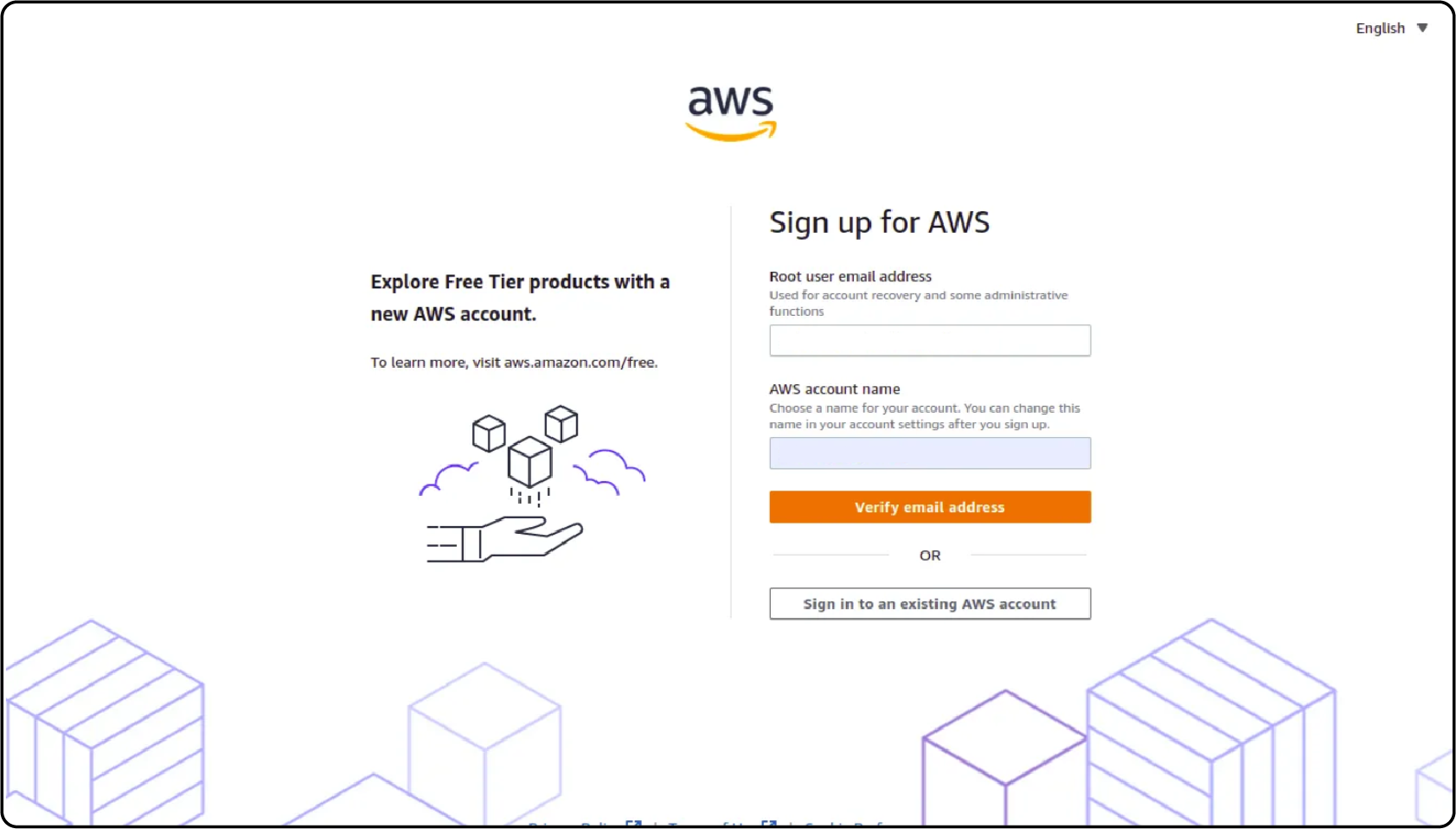
-
Create an Account: Visit the AWS website and follow the instructions to create an account.
-
Log In: Once your account is set up, sign in to your AWS account to get started.
Step 2: Create an EKS Cluster
-
Open the AWS Management Console.
-
Navigate to the EKS service.
-
Click Create Cluster.
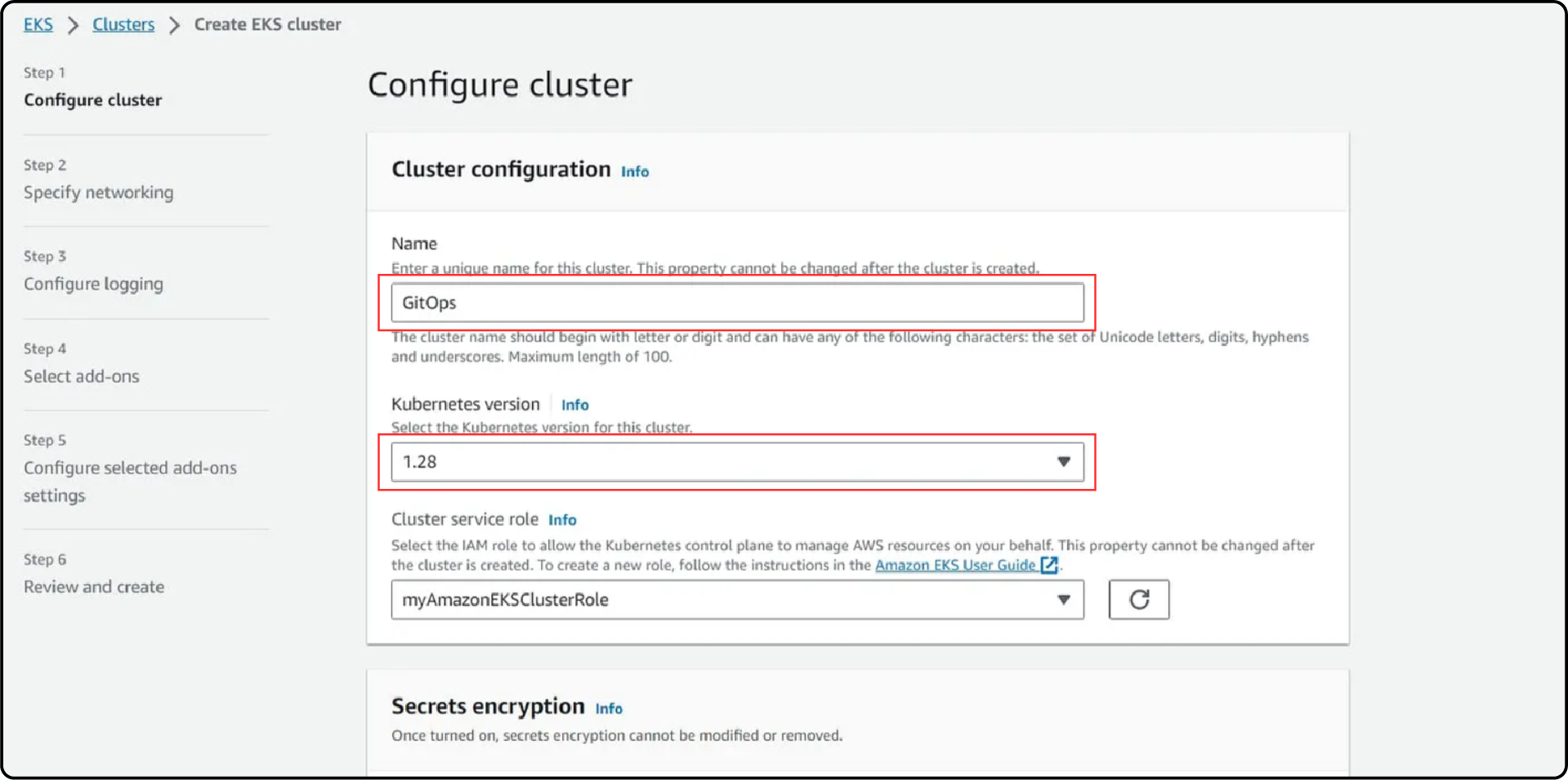
-
Choose the standard setup for your cluster configuration.
-
Specify your cluster name and select the Kubernetes version you prefer.
-
Select the VPC (Virtual Private Cloud) and subnets for your cluster deployment.
-
Configure the node group. This includes selecting the instance type and the number of nodes.
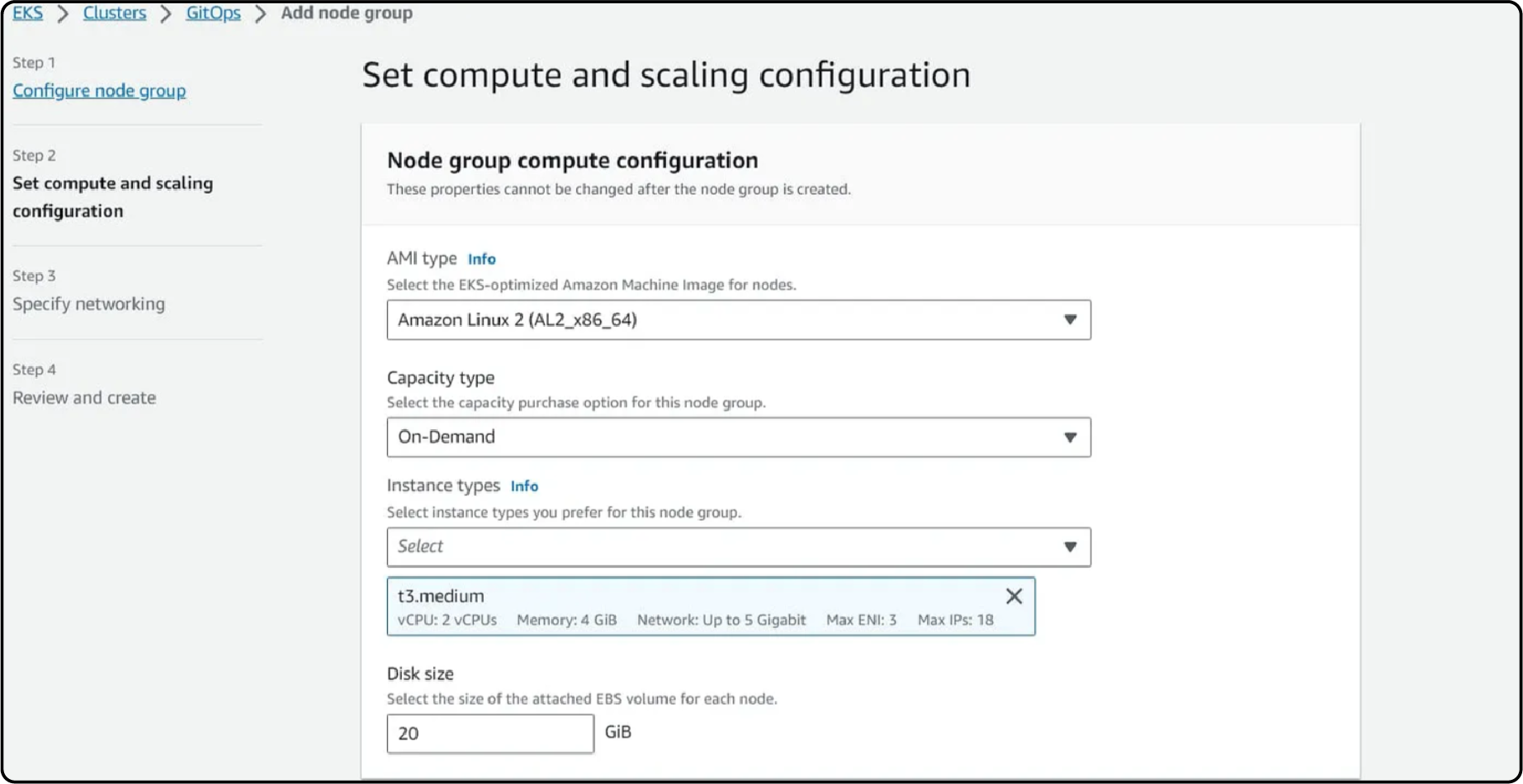
- Review and create the cluster.
Step 3: Configure Your Environment
You will need to set up your local machine to manage the Kubernetes cluster.
-
Install kubectl, a command line tool for Kubernetes.
-
Install aws-iam-authenticator to enable authentication.
-
Update your kubeconfig file to connect
kubectlwith your AWS EKS cluster.
Step 4: Install Magento

To install Magento, use Helm charts to simplify application deployment on Kubernetes.
- Add the Magento Helm chart repository to your system:
helm repo add magento [URL of the repository]
- Update your Helm chart repository:
helm repo update
- Install Magento using Helm. Specify the release name and namespace:
helm install [release-name] magento/magento --namespace [your-namespace]
Step 5: Configure Load Balancing
-
AWS EKS supports load balancing to distribute traffic.
-
Create a service of type LoadBalancer.
kubectl create service loadbalancer [service-name] --tcp=80:80
- This command will provision a LoadBalancer and assign it a public IP address.
Step 6: Set Up Storage
-
Create persistent volumes and claims in your cluster configuration.
-
Ensure they are properly linked to your Magento installation.
Step 7: Secure Your Installation
-
Configure network policies in Kubernetes.
-
Use secrets management tools to handle sensitive information securely.
Step 8: Launch and Verify
- Access the store using the public IP provided by the LoadBalancer.
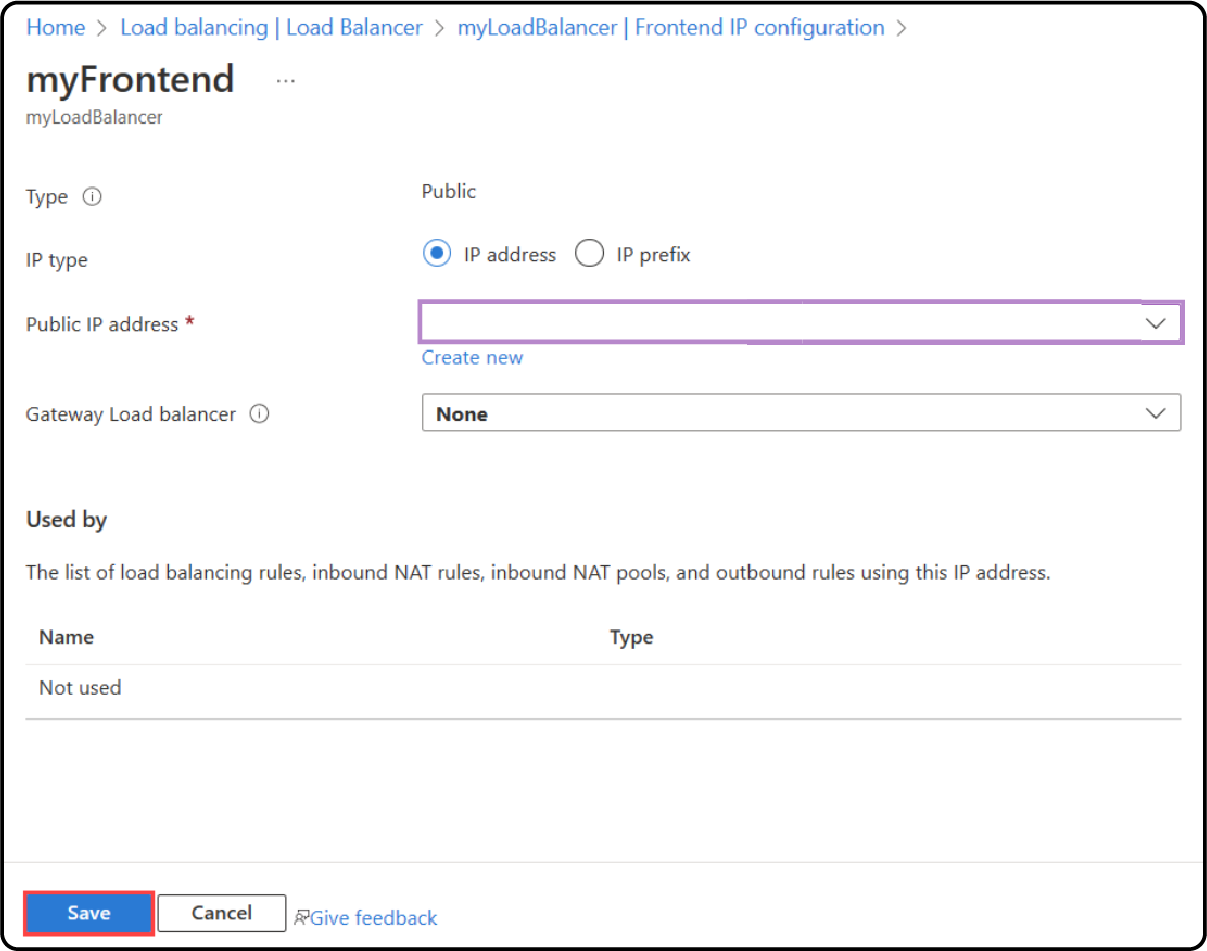
- Verify that all components are working correctly.
Magento on EKS Cost Comparisons
| Aspect | Traditional Hosting | AWS EKS |
|---|---|---|
| Infrastructure Costs | 1. Upfront investments (hardware, licenses) 2. Ongoing maintenance | 1. Pay-as-you-go model with managed service 2. Elastic scalability |
| Deployment & Management | 1. Manual setup and ongoing maintenance of the server 2. infrastructure | 1. Managed Kubernetes service 2. pay-as-you-go pricing model |
| Resource Utilization | Fixed resources, regardless of demand | 1. Efficient resource utilization 2. Auto-scaling 3. Containerization |
Cost Optimization Strategies
1. Right-Sizing Resources
-
Analyze application resource requirements. Adjust AWS EKS cluster configurations accordingly to avoid over-provisioning resources.
-
Implement auto-scaling policies. Dynamically adjust resources based on traffic patterns. It ensures optimal performance while minimizing costs during periods of low demand.
2. Containerization Benefits
-
Use Helm charts for Magento 2 to package and deploy applications consistently. It reduces deployment time and ensures compatibility with AWS EKS.
-
Containerization allows for efficient resource use. It enables Magento applications to run on Kubernetes clusters without unnecessary overhead.
3. Monitoring and Optimization
-
Implement monitoring and logging solutions. Use them to track resource utilization and identify opportunities for optimization.
-
Regularly review AWS billing reports. Use cost management tools to identify cost-saving opportunities. These may include reserved instances or spot instances where applicable.
4. Migration Considerations
Assess the total cost of ownership (TCO) of migrating Magento to AWS EKS. Consider factors such as:
-
Data transfer costs
-
Migration effort
-
Potential savings in operational expenses.
Plan the migration process carefully. Consider potential downtime, data integrity, and performance considerations. Aim to cut disruption to business operations.
FAQs
1. What is Magento Kubernetes AWS EKS?
Magento Kubernetes AWS EKS lets users deploy and manage Magento on Kubernetes. It utilizes Amazon Elastic Kubernetes Service (EKS) for simplified management.
2. How does Magento Kubernetes AWS EKS help in maximizing scalability?
Magento Kubernetes AWS EKS enhances scalability. It offers a managed Kubernetes solution on Amazon EKS. It allows for easy scaling of resources as per demand.
3. What is Helm's role in Magento Kubernetes AWS EKS?
Helm is used in Magento Kubernetes AWS EKS. It manages Kubernetes applications and simplifies the deployment process through package management.
4. How can one deploy Magento on Kubernetes using EKS?
To deploy Magento on Kubernetes using EKS, users need to follow several steps. First, they must set up a Kubernetes cluster. Next, they need to configure Helm charts. Finally, they deploy the Magento application on the cluster.
5. What are the benefits of using Amazon EKS for managing Magento on Kubernetes?
Amazon EKS provides a managed Kubernetes service. It simplifies the setup, management, and scaling of Kubernetes clusters. It makes it easier to deploy and manage Magento applications.
6. How does Magento Kubernetes AWS EKS help in optimizing resource utilization?
Magento Kubernetes AWS EKS helps in optimizing resource utilization. It allows users to focus more on dedicating resources to developing an application. This application makes a difference for their customers. It focuses on meaningful tasks rather than undifferentiated heavy lifting.
7. Can Magento Kubernetes AWS EKS be integrated with other systems or services?
Yes, Magento Kubernetes AWS EKS can integrate with other systems or services. This integration creates a flawless architecture. It enhances the functionality of the Magento application.
Summary
Magento Kubernetes AWS enhances your e-commerce platform's potential. Here's a concise recap of what we covered:
-
It simplifies Magento 2 deployment and management, enabling precise scaling.
-
It securely hosts many Magento 2 instances on the same hardware.
-
It lets you analyze resource requirements, implement auto-scaling, and leverage containerization.
-
Track resource use and review billing reports for cost-saving opportunities.
-
Assess TCO and plan migration to cut disruptions.
Combine Magento Kubernetes with managed Magento hosting for enhanced performance and scaling of your ecommerce store.




